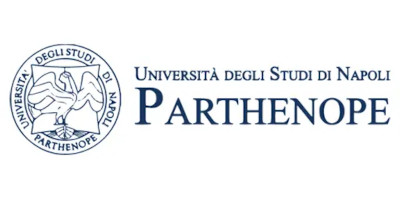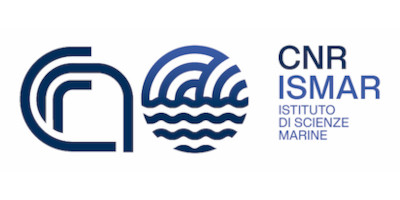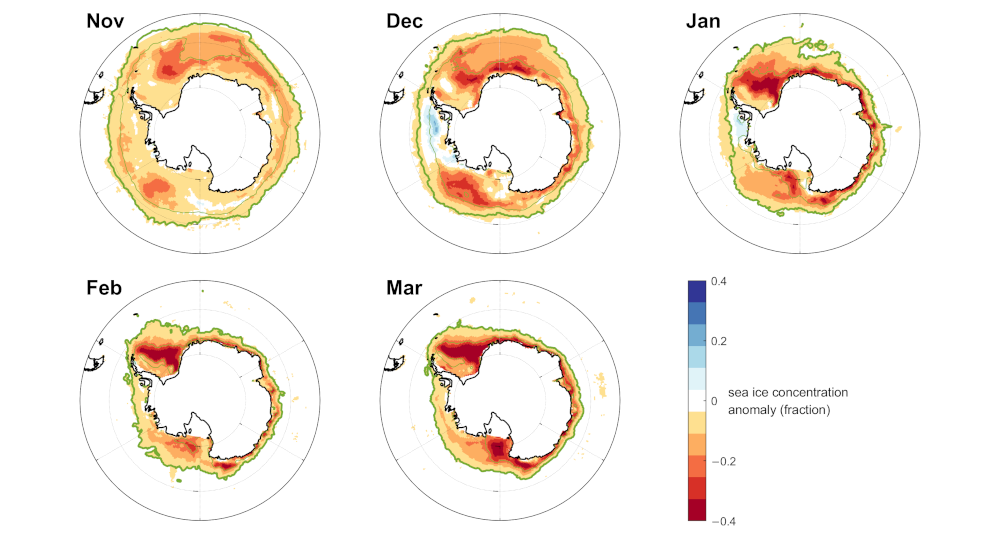IPSODES
Investigating the predictability of the Southern Ocean dynamics through ensemble simulation hindcasts
Overview
The Southern Ocean (SO) dynamics, and the various fronts of the Antarctic Circumpolar Current in particular, are well known to display a very energetic variability covering a wide range of spatial and temporal scales. Since a substantial fraction of such variability is known to be intrinsic, and therefore basically chaotic, predictability in this part of the world ocean is particularly poor.
In this context, the IPSODES project is aimed at improving process understanding concerning the predictability of the SO dynamics through ensemble simulation (ES) hindcasts analyzed by means of various statistical techniques supported by dynamical interpretations, with special focus on multiscale interactions linking high-frequency (up to seasonal) and low-frequency (interannual and larger) variability. Existing state-of-the-art eddy-permitting global ocean-sea-ice model ESs and coupled global atmosphere-ocean-sea-ice model ESs developed for decadal climate predictions will be used. Moreover, new ESs performed with a regional ocean model specifically developed for this project will also be carried out: sensitivity numerical experiments to assess model uncertainty will be performed with these new simulations. The study of transport of marine debris will provide an application of such modelling effort, and will also contribute to model validation through the use of an available valuable data set.
By improving our understanding of the predictability properties of oceanic variability, IPSODES will contribute toward more reliable predictions of the SO dynamics, on both the high- and low-frequency. This will in turn:
- contribute to enhance ocean modelling systems in the framework of the GIPPS;
- suggest improvements to the oceanic observational system;
- provide further knowledge in support of coordinated research on subseasonal to seasonal (WCRP-S2S initiative) and decadal climate predictability and predictions (CMIP6-DCPP initiative).
Outputs
The overarching objective of IPSODES is to substantially advance our knowledge of SO intrinsic ocean variabailtiy (IOV), of its underlying dynamics, of its implications for short- and mid-term predictability, and of its potential environmental repercussions. To achieve its main goal, IPSODES pursues the following specific objectives:
- disentangle the IOV from the global variability of the Antarctic Circumpolar Current (ACC) and improve process understanding concerning the dynamical mechanisms that produce the IOV through the analysis of global as well as regional high-resolution (i.e., eddy permitting and resolving) oceanic simulations;
- evaluate the simulated representation of SO IOV in coupled climate models used in state-of-the-art systems for seasonal and decadal climate predictions, and understand the physical local as well as remote simulated mechanisms that determine predictability (or lack thereof) in the SO;
- determine how IOV can potentially affect the propagation and dispersion of plastic debris in the ocean surface layers, particularly across the ACC fronts, through the characterization (e.g., identification of systematic or preferential dispersion patterns) of Lagrangian trajectories extracted from numerical simulations;
- estimate, together with an improved view of the mere physical transport, broad aspects of the biologically-mediated transport (e.g., sequestration of microplastic through feeding by migrating biota or inputs from ships), implying the inclusion of non-Lagrangian transport properties;
- produce, analyze and share new high-resolution regional ocean model simulations, and develop, test, apply and disseminate innovative statistical and mathematical methods for the study of IOV
Results and dissemination
Articles
- Zanchettin, D., Modali, K., Müller, W. A., Rubino, A., Ross–Weddell Dipole Critical for Antarctic Sea Ice Predictability in MPI–ESM–HR, Atmosphere 2024, 15(3), 295;
- Aliani, S., Basurko, O.C., Arias, M., Isobe, A., Rubio, A., Topouzelis, K., and Cózar, A. (2022) Editorial: Marine Litter Windrows. Front. Mar. Sci. 8:827907. (50% PNRA-IPSODES)
- van Sebille, E., et al. (2020) The physical oceanography of the transport of floating marine debris Environ. Res. Lett., 15, 023003, (20% PNRA-IPSODES)
Book chapters
- Suaria, G., Berta, M., Griffa, A., Molcard, A., Özgökmen, T. M., Zambianchi, E. and Aliani, S. (2022) Dynamics of Transport, Accumulation, and Export of Plastics at Oceanic Fronts. In: The Handbook of Environmental Chemistry. Springer, Cham, pp. 1-51. (35% PNRA)
- Belkin, I.M. et al. (2022). Introduction to the Chemical Oceanography of Frontal Zones. In: TheHandbook of Environmental Chemistry. Springer, Berlin, Heidelberg. (35% PNRA)
Abstracts/Proceedings in scientific conferences
- Zanchettin D., S, Pierini, S. Aliani, A. Rubino, E. Zambianchi, R. Viana Barreto, P. de Ruggiero, A. Colella, Predictability of the Southern Ocean dynamics through ensemble simulation hindcasts. “European Geosciences Union General Assembly 2022” (EGU 2022), abstract EGU22-2229, OS1.10, 25/05 Room L3
- Zanchettin D., S, Pierini, S. Aliani, A. Rubino, E. Zambianchi, P. de Ruggiero. Predictability of the Southern Ocean Dynamics Through Ensemble Simulation Hindcasts; “YOPP Final Summit”, Montreal, 29/08-1/09 2022
- Zanchettin D., K. Modali, W. Mueller, A. Rubino, On the predictability of Antarctic sea-ice concentration; Conferenza “THEMES 2022 - Oceanography and Climatology during the Pandemics: Threads Cut, Weaves to be Re-tied and New Horizons”, Venezia, 17-18 Dicembre 2022
- Colella A., P. de Ruggiero, S. Pierini, Modeling the intrinsic variability of the Antarctic Circumpolar Current; Conferenza “THEMES 2022 - Oceanography and Climatology during the Pandemics: ThreadsCut, Weaves to be Re-tied and New Horizons”, Venezia, 17-18 Dicembre 2022
- Pierini S., 2021. On the role of excitable systems in climate dynamics. International Conference SR40:1981-2021, forty years of Stochastic Resonance, Perugia, 13-15 September, 2021
- Aliani, S., UN Major Group statement for ISC at Intergovernmental Negotiating Committee to develop an international legally binding instrument on plastic pollution, including in the marine environment. Uruguay, December 2022
- Kara L., L. Law, S. Aliani, T. Mandel, N. Pujara, E. van Sebille, Physical Processes Governing the Distribution and Transport of Dispersed Particles in the Ocean - Ocean Sciences Meeting 2020, AGU
- Pierini S., 2022. Analisi dei cambiamenti climatici mediante la metodologia delle realizzazioni climatiche parallele. Seconda Conferenza Nazionale sulle Previsioni Meteorologiche e Climatiche, Bologna, 21-22 Giugno 2022
Database
Sessions organized in international conferences
- “Polar regions - IPSODES session” at the international conference “THEMES2022 - Oceanography and Climatology during the Pandemics: Threads Cut, Weaves to be Re-tied and NewHorizons”, Venice 17-18 December 2022
The study by Zanchettin et al. (2024) shows how systematic climate model errors (“drift”) can determine poor predictability of Antarctic sea ice. Figure: evolution of the drift in sea-ice concentration from hindcasts with MPI-ESM-HR, from the first to the fifth month after initialization. Note the strong underestimation of sea ice in the Weddell and Ross seas. Figure adapted from Zanchettin et al. (2024)
Partners
Participating Institutions

University Ca’ Foscari of Venice, Department of Environmental Sciences, Informatics and Statistics, contact person: Davide Zanchettin, davidoff@unive.it

University Parthenope of Naples, Science and Technology Department, contact person: Stefano Pierini, pierini@uniparthenope.it

National Research Council, Institute of Marine Sciences, contact person: Stefano Aliani, stefano.aliani@sp.ismar.cnr.it

